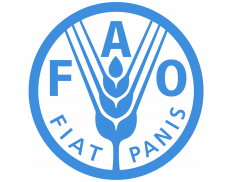Share
Print

This Country Programming Framework (CPF) sets out three government priority areas to guide FAO partnership with and support to the Government of Ethiopia - bringing together innovative international best practices and global standards with national and regional expertise during the five - year program period ( 2016 - 2020). The CPF was prepared following consultations and agreements with the Ministry of Agriculture and Natural Resources, Ministry of Livestock and Fisheries Resources, Ministry of Forestry, Environment and Climate Change.
Priority area 1. Crop production
Crop productivity per unit area of land in Ethiopia remains very low due to various constraints including the limited use of appropriate productivity boosting technologies and appropriate crop production husbandry practices. Crop pests and diseases do also contribute to the low level of productivity and huge post-harvest losses of up to 30%. For the majority of the smallholder producers, the economic benefit derived from the cropping enterprise is unsatisfactory because of the limited level of value addition to the produce and the inadequate integration with market.
FAO has been working with the government and other development partners to address these constraints. FAO supports the effort to increase agricultural productivity and promote the value chain approach, and crop intensification and diversification through improved crop genotypes, best agronomic and pest management practices.
Priority area 2. Livestock and fisheries
The livestock sector makes substantial contributions to the agricultural GDP (about 25%) and National GDP (>11%). However, there are challenges that undermine the benefits that the sector could offer for economy. The country’s huge livestock potential had not been put into maximum use. Factors including lack of institutional capacities and improved technologies, limited availability, inadequate credit support systems and market structure, inefficient coordination and capacity of the stakeholders across the value chains, shortage of quality livestock feed, and livestock diseases reduced livestock productivity.
The country also could not utilize the huge livestock and livestock products export potential due to lack of capacity to meet international safety and sanitary standards. To countervail the above gaps and shortcomings, the Ethiopian Government has emphasized the development of the sub-sector and accordingly developed a livestock master plan that intends to improve livestock productivity, develop livestock value chains and improve the sanitary standards and regulatory frameworks.
Priority area 3. Sustainable natural resource management
It is estimated that as high as 80 percent of Ethiopia’s natural resource base is suffering some level of degradation with indigenous tropical forest disappearing at an estimated 3.6 percent in the highlands and 1.2 percent over the whole country. Increased land degradation is caused by poverty, population pressure, inappropriate use and management, inadequate inputs including nutrient recycling, unsuitable farming and grazing practices, absence of appropriate technologies and land use plans, inefficient markets and other barriers.
Although the Government of Ethiopia has embarked on different programs and projects to promote natural resources management practices, land degradation, inefficient agricultural water management is still prevalent.
External technical support and significant investments are required to reverse the situation and use the scarce water resources efficiently increase water productivity. Lack of accurate and up-to-date information also constrains appropriate decision-making for land and water resources development. Hence, FAO will support the Government in promoting sustainable natural resource management experiences.
